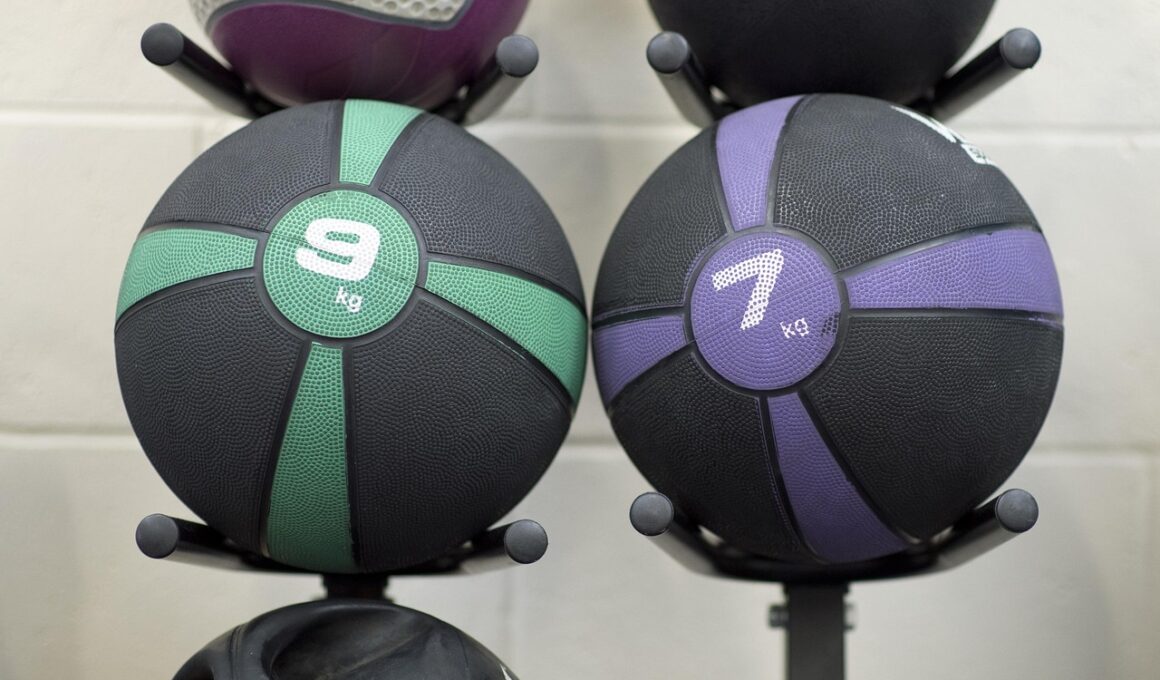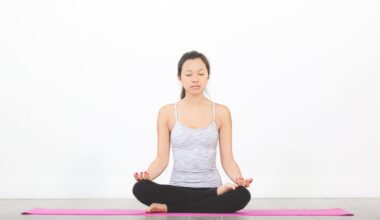The Role of Medicine Balls in Functional Movement Training
Medicine balls have become integral tools for enhancing functional movement training. These weighted spheres mimic real-life tasks and improve overall physical performance. They are versatile pieces of equipment that can be used in various exercises targeting strength, stability, and coordination. With their diverse applications, medicine balls aid athletes and fitness enthusiasts in achieving their training goals. By incorporating these balls into workouts, individuals can engage multiple muscle groups simultaneously, promoting better physical results. The dynamic nature of medicine ball exercises encourages athletes to develop explosive power, balance, and agility, aspects crucial for sports performance. Furthermore, using medicine balls facilitates improved core strength, an essential component for overall stability during physical activities. These exercises can suit every fitness level, making them accessible for beginners and advanced athletes. Whether it’s throwing, slamming, or tossing, each movement can be tailored to meet specific training needs. This adaptability allows for varied routines, preventing monotony in workouts. By incorporating progressive load increases, users can continue to challenge themselves and enhance their functional movement capabilities, making medicine balls invaluable for anyone serious about fitness.
Among the various applications of medicine balls, core stability exercises stand out as highly beneficial. The core is vital for maintaining balance and proper posture during any physical activity. Medicine balls enhance core engagement by requiring users to stabilize their bodies while performing movements. Fundamental exercises like Russian twists and medicine ball slams effectively build strength in the obliques and core muscles. Additionally, these exercises can be modified for different fitness levels, offering a scalable approach to training. Integrating different medicine ball weights allows users to find the right challenge and progressively improve their strength. Furthermore, rotating through various exercises minimizes the risk of boredom, while maintaining engagement during workouts. This versatility invites participants to explore functional movement patterns that mimic everyday actions, making their training more applicable to real-world tasks. Incorporating partner exercises, such as medicine ball passes, promotes teamwork and enhances communication skills among trainees. Overall, the incorporation of medicine balls into core workouts can provide a comprehensive training experience that results in improved functional fitness and athletic performance.
Improving Power and Agility with Medicine Balls
Medicine balls offer unique opportunities for improving power and agility through dynamic exercise patterns. Athletes and fitness enthusiasts can incorporate various throws and catches into their routines, ensuring a push for athletic performance. For example, medicine ball overhead throws develop explosive upper body strength and power vital for various sports. The rotational med ball throws can enhance the core’s rotational strength, benefiting athletes who require torque and speed during performance. Additionally, agility drills using medicine balls train athletes in quick reaction times and precise movements. These drills can include lateral medicine ball tosses or explosive jumps with a ball, both effectively improving agility and body coordination. Furthermore, incorporating plyometric movements with medicine balls enhances cardiovascular fitness, making workouts both challenging and effective. Progressing to more advanced methods, like incorporating movement patterns that combine various skills, can help develop overall athletic capability. By blending various modalities of movement, athletes can experience improvements in performance metrics, making medicine balls a powerful addition to any training regimen.
Alongside strength and power development, medicine balls also play a significant role in enhancing coordination and balance. Incorporating ball work into training routines can improve fine motor skills needed in everyday life. Users engage in activities that require hand-eye coordination, such as catching or passing medicine balls, that build these essential skills. Exercises such as balance tosses challenge individuals to stabilize while maintaining movement, bridging the gap between static training and dynamic performance. By enhancing coordination and balance, individuals expose themselves to reduced injury risks and improved confidence in physical activities. Another focus should be achieving proper alignment during exercise, ensuring safety and effectiveness in training. Engaging multiple muscle groups promotes balanced development, crucial for maintaining functional fitness. These foundational skills can positively impact athletes’ overall performance, especially in sports requiring explosive movements or multidirectional changes. Through consistent practice, coordination and balance can be significantly improved, translating into stronger athletic abilities. Therefore, emphasizing medicine ball exercises during training helps athletes achieve well-rounded skill development.
Enhancing Rehabilitation with Medicine Balls
Medicine balls are also valuable tools for rehabilitation programs and injury prevention. Their low-impact nature allows individuals recovering from injuries to gradually progress their strength without excessive strain. Specific exercises can safely engage muscles while promoting joint stability and mobility. Rehabilitation professionals often incorporate medicine balls into their programs to diversify exercises and facilitate patient recovery. For instance, performing controlled medicine ball tosses can help patients regain symmetry and coordination in their movements. Additionally, strengthening the core while using lightweight medicine balls promotes functional strength necessary for daily activities. Their versatility allows for modifications according to individual capabilities, making them suitable for various recovery phases. Moreover, medicine ball exercises encourage engaging muscles around injured back and shoulder areas, which can support recovery and enhance stability post-injury. Furthermore, utilizing medicine balls in group settings creates opportunities for social interaction and support among participants. Ultimately, the presence of medicine balls in rehabilitation can foster a proactive approach to recovery by motivating individuals to engage more actively in their healing journey.
As medicine balls are integral to functional movement training, incorporating them into circuit workouts can maximize their effectiveness. Circuit training involving medicine balls promotes a diverse approach to exercises that challenge various muscle groups and energy systems simultaneously. This style of training can be adapted to suit all fitness levels and preferences, offering a comprehensive workout. Participants can cycle through stations with different medicine ball exercises, including squats, core rotations, and dynamic throws. This format maximizes workout efficiency while providing variety to prevent boredom. To amplify the benefits, cardiovascular and strength components can be combined within the circuit, promoting a higher caloric expenditure during sessions. Engaging in such varied training allows participants to enjoy progressively intense workouts, increasing their challenges over time. Furthermore, developing a circuit can involve pairing exercises effectively to optimize recovery between intense movements. As individuals complete circuits, they can experience a full range of motion, emphasizing functional movement skills. Therefore, integrating medicine balls within circuit training encourages overall improvements in strength, endurance, and functionality.
Conclusion: The Versatility of Medicine Balls
In conclusion, medicine balls serve various purposes within functional movement training. Their unique design and functionality promote strength, agility, and coordination, making them valuable additions to any training routine. As versatile and adaptable tools, they can be customized to meet the specific needs of individuals. Their applications span from improving athletic performance to enhancing rehabilitation efforts, indicating their wide-ranging benefits. Participants can explore dynamic exercises that challenge their abilities and achieve more significant fitness results. Engaging in medicine ball workouts encourages well-rounded development, helping individuals experience improvements in various physical attributes associated with functional fitness. Additionally, the social aspect of engaging in partner exercises can foster community building among trainees. Ultimately, medicine balls are more than just equipment; they represent an investment in one’s overall health and performance goals, fostering physical engagement and personal growth. Incorporating them into daily routines can lead to lasting changes in fitness and functionality, making them essential tools for everyone seeking to improve their physical capabilities.
By integrating medicine balls into your fitness journey, you connect dynamic exercises with health and well-being. These activities promote not only strength but also endurance and balance.


